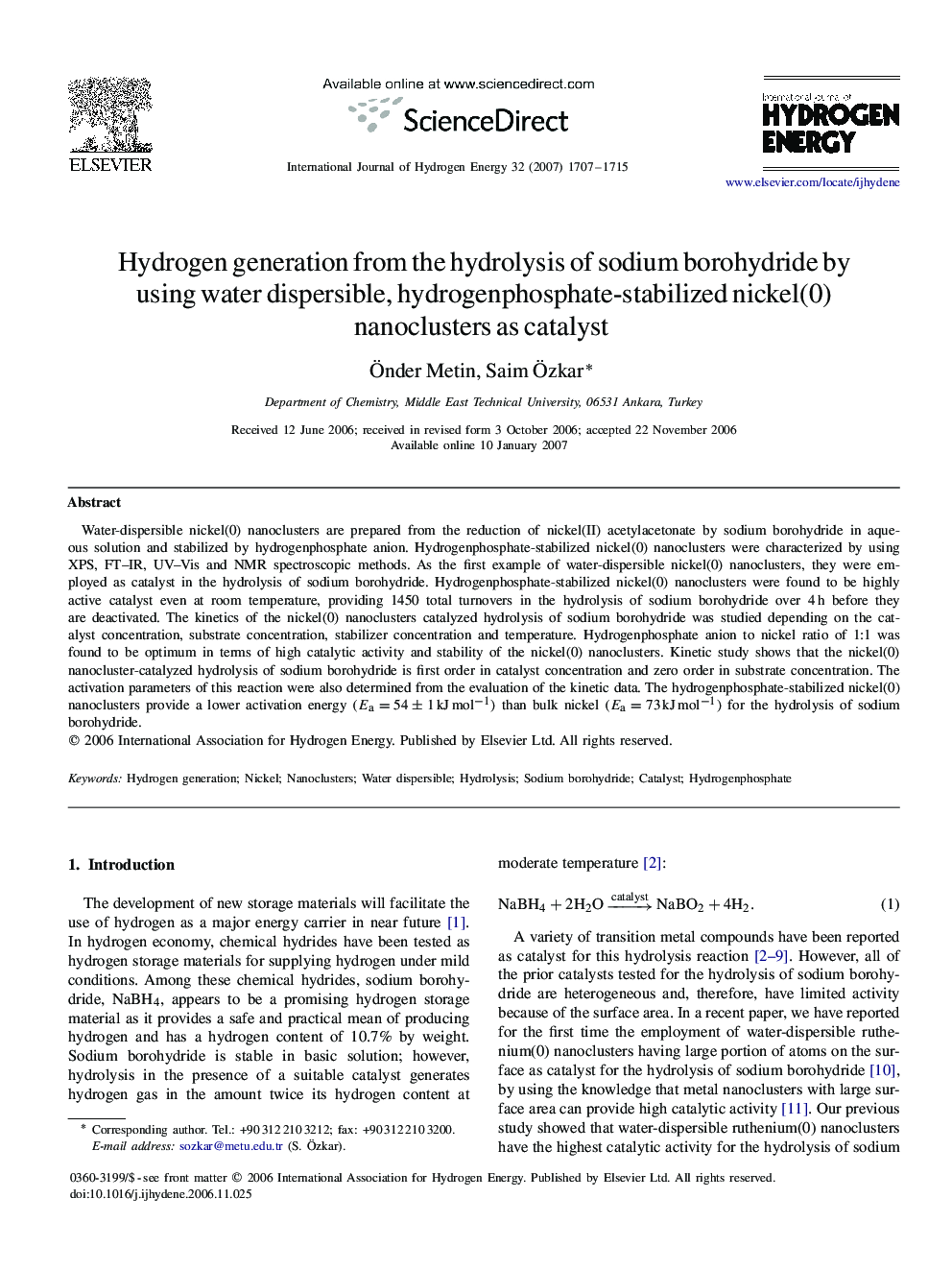| Article ID | Journal | Published Year | Pages | File Type |
|---|---|---|---|---|
| 1274964 | International Journal of Hydrogen Energy | 2007 | 9 Pages |
Water-dispersible nickel(0) nanoclusters are prepared from the reduction of nickel(II) acetylacetonate by sodium borohydride in aqueous solution and stabilized by hydrogenphosphate anion. Hydrogenphosphate-stabilized nickel(0) nanoclusters were characterized by using XPS, FT–IR, UV–Vis and NMR spectroscopic methods. As the first example of water-dispersible nickel(0) nanoclusters, they were employed as catalyst in the hydrolysis of sodium borohydride. Hydrogenphosphate-stabilized nickel(0) nanoclusters were found to be highly active catalyst even at room temperature, providing 1450 total turnovers in the hydrolysis of sodium borohydride over 4 h before they are deactivated. The kinetics of the nickel(0) nanoclusters catalyzed hydrolysis of sodium borohydride was studied depending on the catalyst concentration, substrate concentration, stabilizer concentration and temperature. Hydrogenphosphate anion to nickel ratio of 1:1 was found to be optimum in terms of high catalytic activity and stability of the nickel(0) nanoclusters. Kinetic study shows that the nickel(0) nanocluster-catalyzed hydrolysis of sodium borohydride is first order in catalyst concentration and zero order in substrate concentration. The activation parameters of this reaction were also determined from the evaluation of the kinetic data. The hydrogenphosphate-stabilized nickel(0) nanoclusters provide a lower activation energy (Ea=54±1kJmol−1) than bulk nickel (Ea=73kJmol−1) for the hydrolysis of sodium borohydride.
